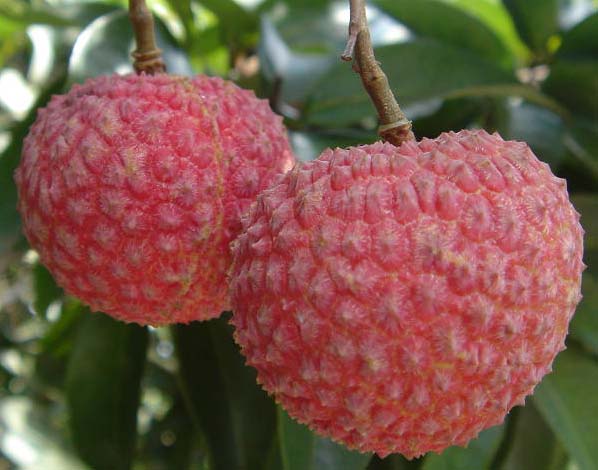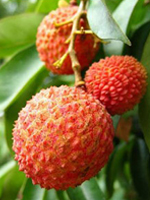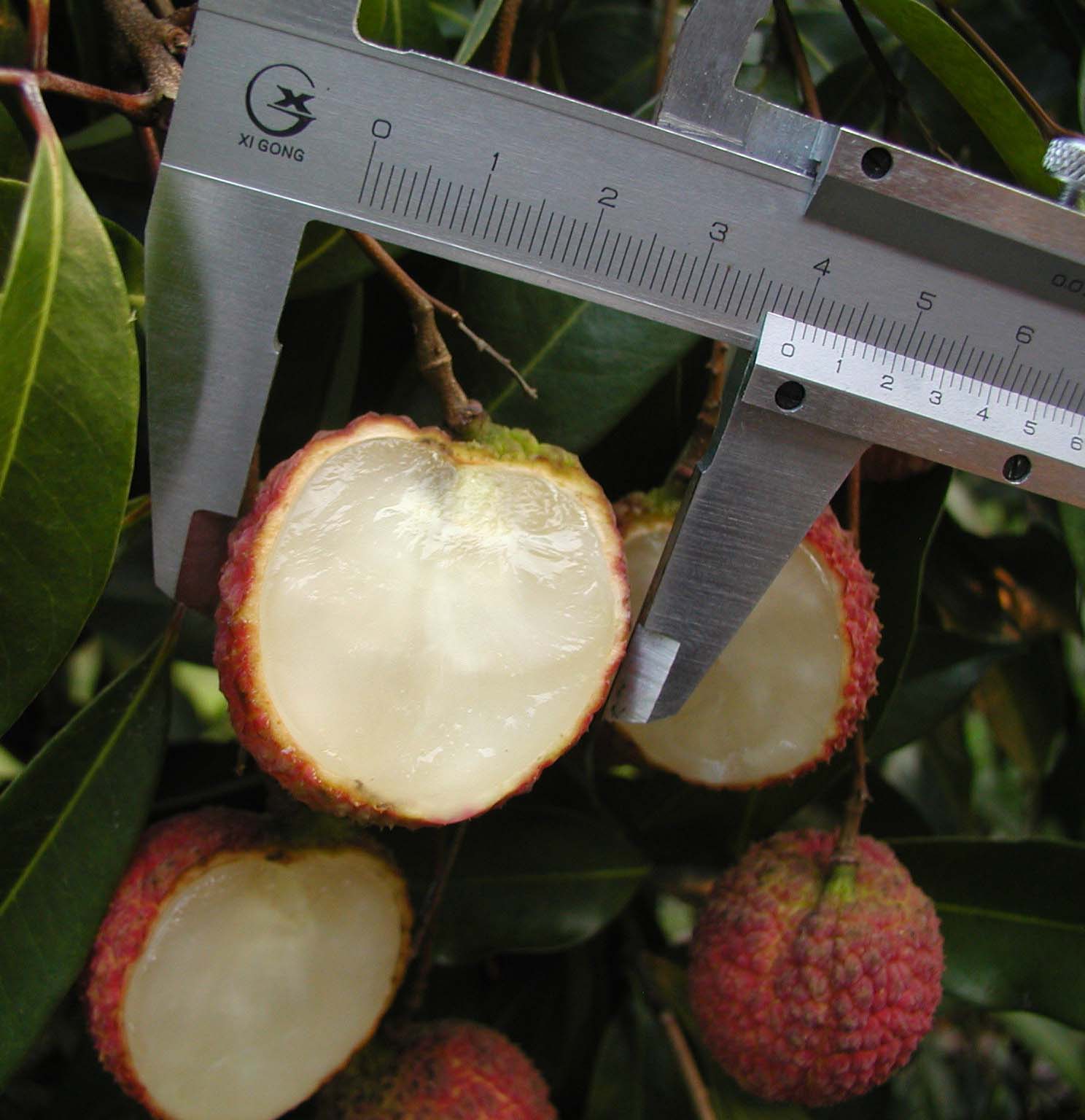Scientific classification
- Scientific Name : Litchi chinensis Sonn.
- English Name : Lychee,Litchi,Leechee,Litchi chinensis,Lichee,Dimocarpus Lichi, Nephelium Litchi,Chinese Litchi,Chinese Leechee,Litchee,)
- Family : Sapindaceae
- Genus : Litchi
- Type : Evergreen Tree,Broadleaf Evergreen
- Country Of Origin : China
Litchi chinensis, commonly known as lychee, is an evergreen monoecious tree with a dense rounded crown that is native to southern China. It is noted for producing an excellent tasting globose to ovoid red fruit. Cultivation of this fruit tree (particularly cultivars thereof) now occurs in tropical and sub-tropical areas around the world including southern Florida, California and Hawaii. It will grow to 110' tall in its native habitat, but usually grows slowly in cultivation to only 20-30' tall over the first 25-30 years. Pinnate compound glossy lime green leaves, each with 4-8 pointed lanceolate leaflets in pairs, are evergreen. Yellow flowers in long terminal and axillary panicles (separate male and female flowers in each panicle) bloom in spring. Flowers are followed by globose to ovoid fruits which turn red when ripe with inner white translucent flesh. Fruits typically mature June -July (sometimes to September). Fruit is eaten fresh when in season, made into preserves, dried (lychee nut), pickled, or frozen with little loss of flavor. Lychee was introduced from China to Hawaii in 1850s. In Hawaii, the tree is grown both commercially for fruit production and as a landscape tree for both shade and fruit harvest.
Suitable for: Litchi is cultivated in the region from 17 to 25 degree in latitude and from 98 to 117 degree in longitude,is adapted to the tropics and warm subtropics, producing best in regions with winters that are short, dry and cool but frost free, and summers that are long and hot with high rainfall. In the tropics it may thrive better at some elevation because of its requirement for winter chilling. It grows best in areas where annual daytime temperatures are within the range 20 - 35 degrees centigrade, but can tolerate 15 - 40 degrees centigrade. When dormant, the plant can survive temperatures down to about -5 degrees centigrade, but young growth can be severely damaged at -1°c. It prefers a mean annual rainfall in the range 1,000 - 1,700mm, but tolerates 700 - 2,800mm.A position in full sun is best for fruit production, but young plants grow better if they are given some shade. Plants are tolerant of a range of soil types, including heavy clays, so long as they are well drained, but grow best on deep, rich, acid soils that are rich in organic matter. They have succeeded on limestone soils when iron chelates have been added. Tolerant of wet soils, providing the water is not stagnant. Plants require a position that is sheltered from the wind, especially when they are young. Prefers a pH in the range 5.5 - 6.5, tolerating 5 - 8.5.
Uses:Commercially grown for fruit production. Excellent landscape tree which provides shade, fruit and botanical interest to front or back yards.




